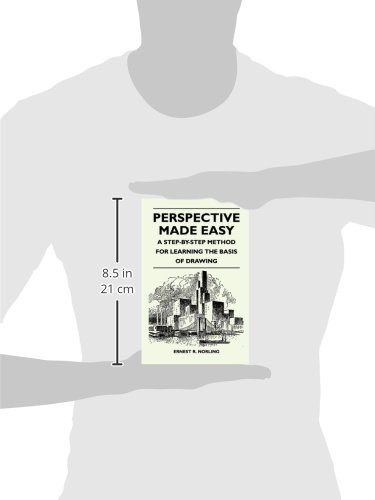Customer Services
Copyright © 2025 Desertcart Holdings Limited
Desert Online General Trading LLC
Dubai, United Arab Emirates




Full description not available
I**W
Excellent
The best book for learning perspective. There are other books out there that have more information, and if you are looking for something very technical, Perspective for Artists by Rex Cole is a great reference, but Norling's book is the best book on learning perspective. I've been using this book for a couple of months now and would recommend it to anyone wanting to learn perspective.
C**E
Wow! A Must Read for Every Aspiring Artist
If you do any kind of drawing or painting, do yourself a favor and read this book at least once. Its author has the rare talent of being able to explain mysterious concepts very clearly with helpful illustrations and simple wording. He points out a lot of super basic principles which you never get taught elsewhere, and they will quite likely forever change the way you approach your projects. I'm not what you'd call a super talented artist, and I found this to be very encouraging and helpful. You really pick up that the author sincerely wants to help make art a more enjoyable perspective for you.
T**H
A classic that puts perspective in perspective!
Clearly the best book I've found for teaching perspective. A deceptively simple concept that confuses and confounds every art student I've known is demystified. Written and illustrated in a way that makes the methods accessible to anyone who can read, write and draw a smiley face!
B**E
I can't recommend enough for the beginner
This has really helped me with perspective, I can't recommend enough for the beginner. Even the pro might benefit from a few of these quick tips.Even though it was written quite a while ago now, the writing it's self is clear and easy to understand.This would make a great gift for anyone who's interested in starting art, possibly even art students because from what I've seen with my friends, not all art classes teach perspective effectively.
J**K
Even covers Shade and Shadows!!
This book is written from an artist's point of view, and is designed specifically to help drawings. Although it was written originally in 1939, the rules of perspective don't change, and it was updated in the late 60's. It covers vanishing points, moving vanishing points, and using the rules of perspective to make drawings of interiors. It covers ellipses, cylinders and cones. I bought 2 books on perspective and they pretty much said the same thing --- but the explanations were slightly different which helped my understanding. A great reference!!
V**Y
Good Introduction
This book was a good deal and I wanted to learn more about perspective because it wasn't an area I was very comfortable in. I thought it did a good job of introducing someone to the concept of perspective and to show you various ways on how you can use perspective in your art.
P**I
Perspective is Easy!
I got this book as it was suggested from Andrew Loomis through another book. I have to say I'm very happy to have this book. It is a great introduction and foundation to perspective.This book is easy, light reading. Most of it is very simple and easy to understand. Also, after every chapter/lesson, there are highlights to note and assignments to apply the newly learned information. You can finish this book quite quickly, but the book is designed so that the concepts may stay with you as you read and practice the exercises.I think learning this before going into a book like Successful Drawing by Andrew Loomis can make learning from his book more enjoyable and easier to learn the more intermediate perspective concepts.The book has this statement in the first chapter that opened my mind to really wanting to learn perspective."The artist's business is to be able to draw an object so that it will look solid and not flat like the surface of the paper on which it is drawn. In so doing that artist employs a method that we call perspective."If you want to be an artist, get this book!
A**E
Very easy to understand with LOTS of pictures.
I bought this book because I decided that I wanted to learn to draw. Obvious to me is that I needed a lesson on perspective. This book definitely fits the bill. It starts out very basic and builds on each idea. My favorite part of the book is the antiquated example, "Imagine your wearing a diving helmet." A diving helmet? Why would I wear that? Why wouldn't I wear a snorkel and mask. It's just an added entertainment feature.
Trustpilot
1 week ago
2 weeks ago